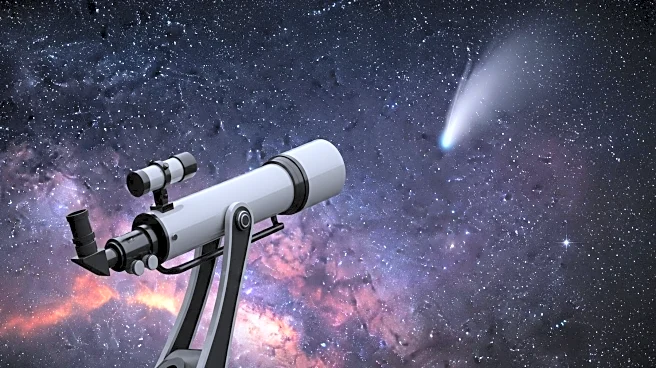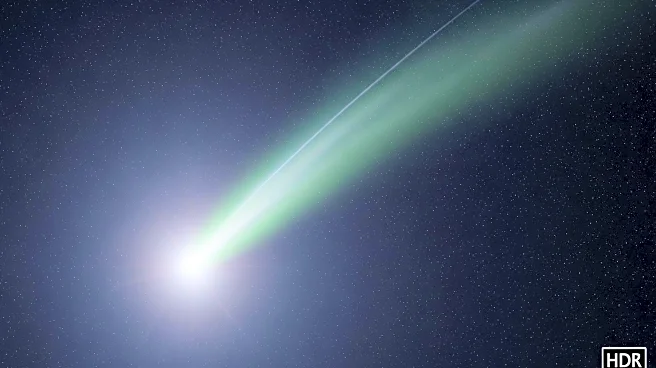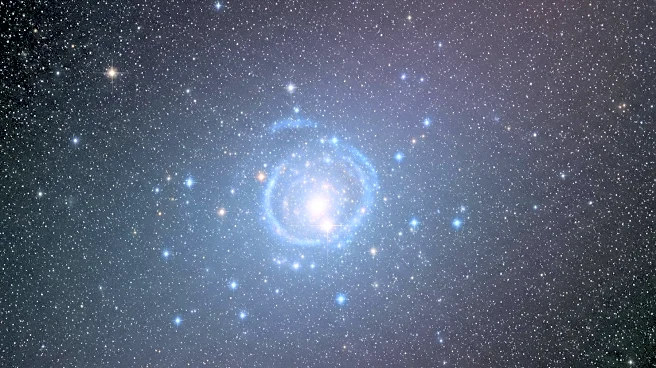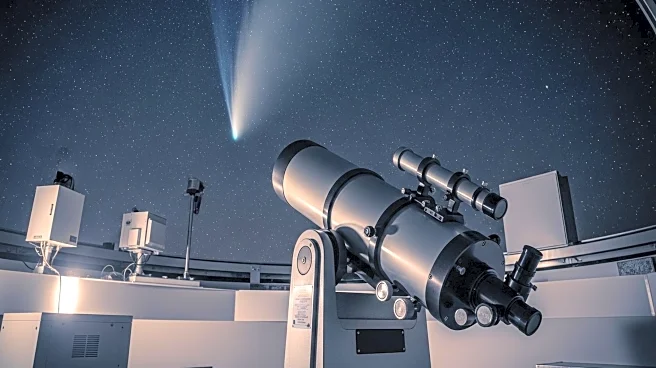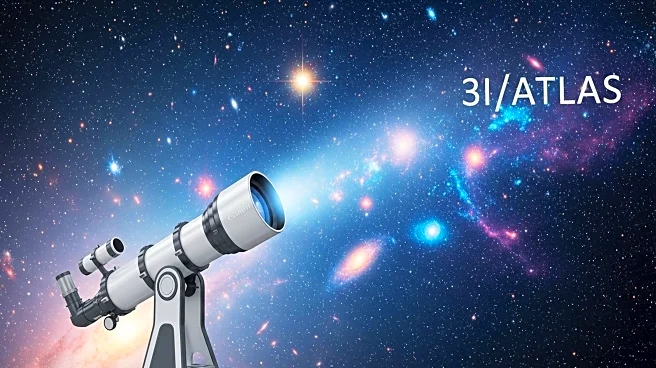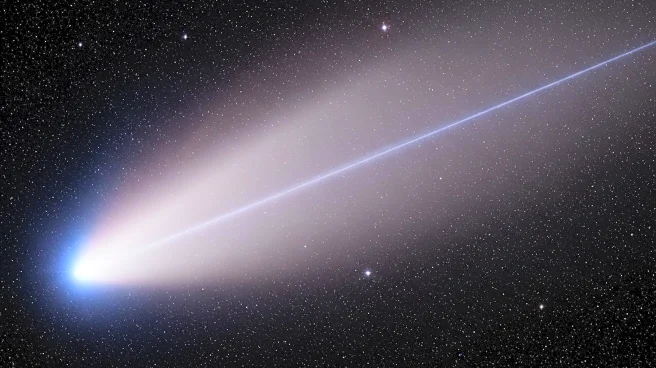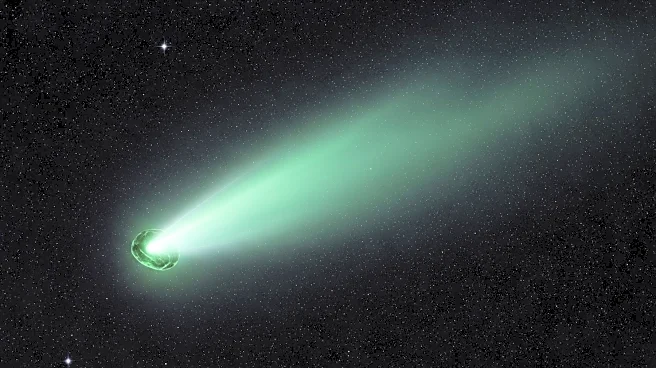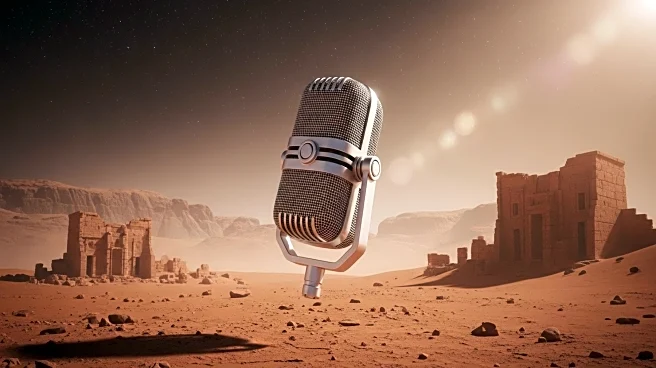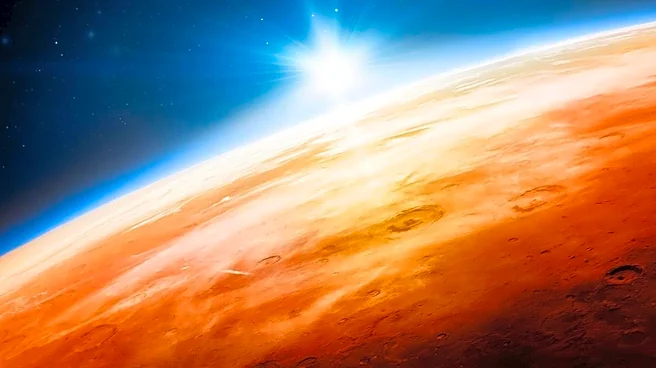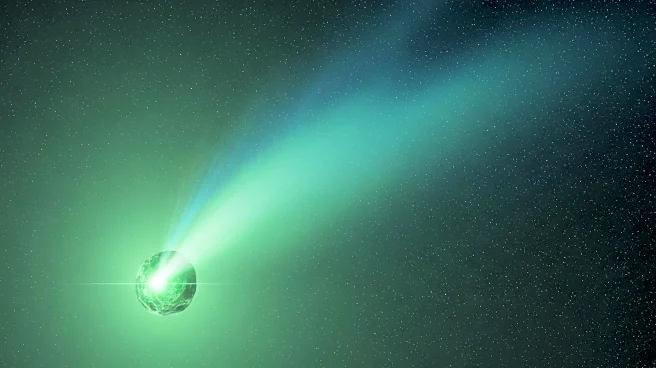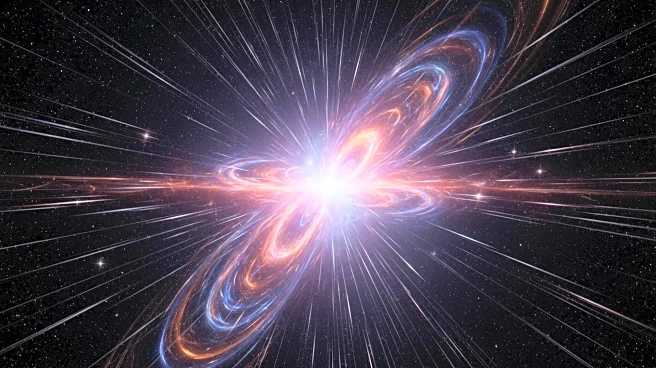What is the story about?
What's Happening?
Astronomers have identified a new interstellar object, 3I/ATLAS, marking the third such discovery. Initially detected by the Asteroid Terrestrial-impact Last Alert System (ATLAS) on July 1, the object was first thought to be an asteroid. However, further calculations revealed it to be a comet from outside the solar system, traveling at an unprecedented speed of 60 kilometers per second. This speed indicates its interstellar origin, as it surpasses the solar system's escape velocity. Observations by the Hubble Space Telescope show a teardrop-shaped cocoon of dust surrounding its icy nucleus. The comet's composition includes an unusual polarization of light and a higher concentration of carbon dioxide compared to solar system comets. Its nucleus is estimated to be about 2.8 meters across, smaller than initially thought.
Why It's Important?
The discovery of 3I/ATLAS is significant as it provides insights into the nature of interstellar objects and their composition. The comet's unique characteristics, such as its polarization and carbon dioxide levels, challenge existing models of comet formation and behavior. Understanding these interstellar visitors can enhance knowledge of planetary formation processes in other stellar systems. The presence of such objects suggests that the solar system may host numerous interstellar visitors, potentially offering more opportunities for study. The Vera C. Rubin telescope in Chile could further aid in detecting these objects, allowing for earlier and more detailed observations.
What's Next?
3I/ATLAS will soon disappear into the sun's glare but is expected to reappear in December, providing astronomers with a year-long window to study it as it exits the solar system. The comet's trajectory will bring it closer to Mars than Earth, allowing the Mars Reconnaissance Orbiter to capture high-resolution images. This could yield better data than the Hubble Space Telescope. The comet's survival through its orbit around the sun remains uncertain, but if it does, it will offer valuable data during its closest approach to Earth.
AI Generated Content
Do you find this article useful?
